When Pisa ruled the seas. The history of the Pisan Arsenals.
For those who do not find themselves delving into the subject, it may still be mysterious or at any rate bizarre that the city of Pisa, now inland in Tuscany, about 10 km from the coast, had a glorious past on the sea, as it is known, as a Maritime Republic, but even earlier as a port call of the Roman Empire, and even later, within the hegemonic aims of the Tuscan Grand Duchy. While it is true that in Roman times Pisa still overlooked the Tyrrhenian Sea, so much so that numerous archaeological remains of ships have been found in the city, by the Middle Ages the gradual silting up and deposition of debris brought by the rivers Arno and Auser (now Serchio) had already advanced the coastline considerably, but this did not prevent the Pisan Republic from establishing itself on the sea as one of the major powers of the time, coming to have among its domains the Balearic Islands, Corsica and areas of Sardinia, as well as possessions in Jerusalem and Caesarea, and other colonies still in the East.
To do this in the course of time it developed landings and moorings on the sea, the most famous of which was the Pisan Port that stood in the area now occupied by the northern quarters of Leghorn, and also along the course of the two rivers, and nodal importance had it in this case the river port that stood directly in the city, as well as a dense system of basins, canals and minor waterways. Fundamental, therefore, was the constant work, supervised by the Magistrates of Water, of organization, canal construction, reclamation and interventions to straighten the course of the Arno.
But alongside this laborious development of the port network, no less important was the shipbuilding needed to ensure Pisa had a fleet. Historian and scholar Marcella Aglietti points out how long is the Pisan tradition regarding its dockyards, which would date back at least to the Lombard era (569 - 770), when the Pisan dromones warred with Byzantine vessels. And an early record of a local fleet is dated to 603, later annalists recall the victorious naval expedition led by Count Bonifacio of Lucca in 828 against Corsica and Sardinia and then again to the coast of North Africa. A few centuries later in 1087 Pisa engaged three hundred ships to conquer the African coast near al-Mahdiya and Zawila, while one hundred and twenty were the vessels involved in the First Crusade of 1098-1099, an enterprise that earned the Archbishop of Pisa his appointment as the first Latin Patriarch of Jerusalem.
The Battle of Meloria in 1284, which saw the Pisan fleet defeated by the Maritime Republic of Genoa, closed the cycle of the Tuscan city’s glories at sea, and was the beginning of its naval and mercantile decline. Six years after the war fought in front of Livorno, the Pisans, who had not complied with the harsh conditions of war imposed by the Genoese, suffered a new serious injury: the Ligurians, in fact, clogged the mouth of the major channel of access to the Pisan Port by sinking a galley full of debris from the watchtowers; they also broke the chains that prevented access to the port, taking them to Genoa as a sign of victory.
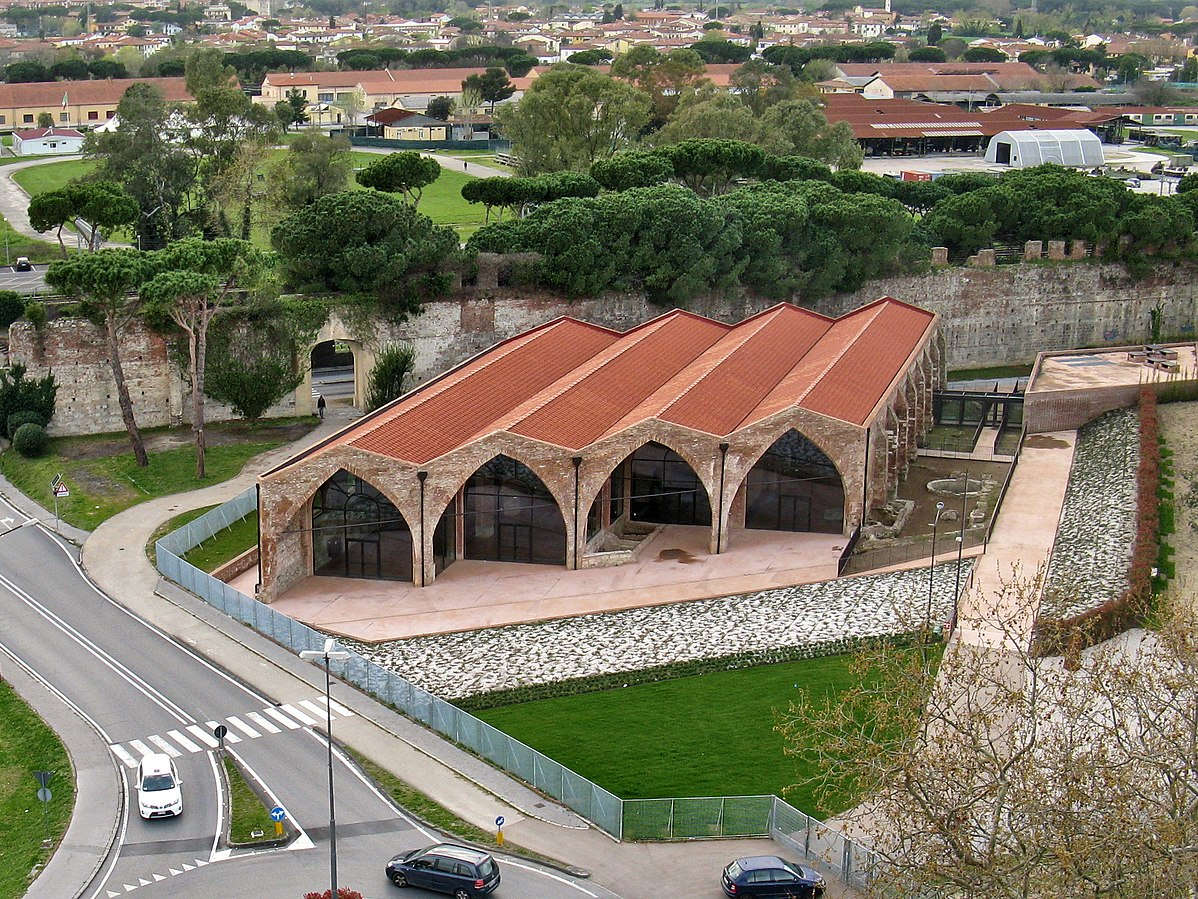
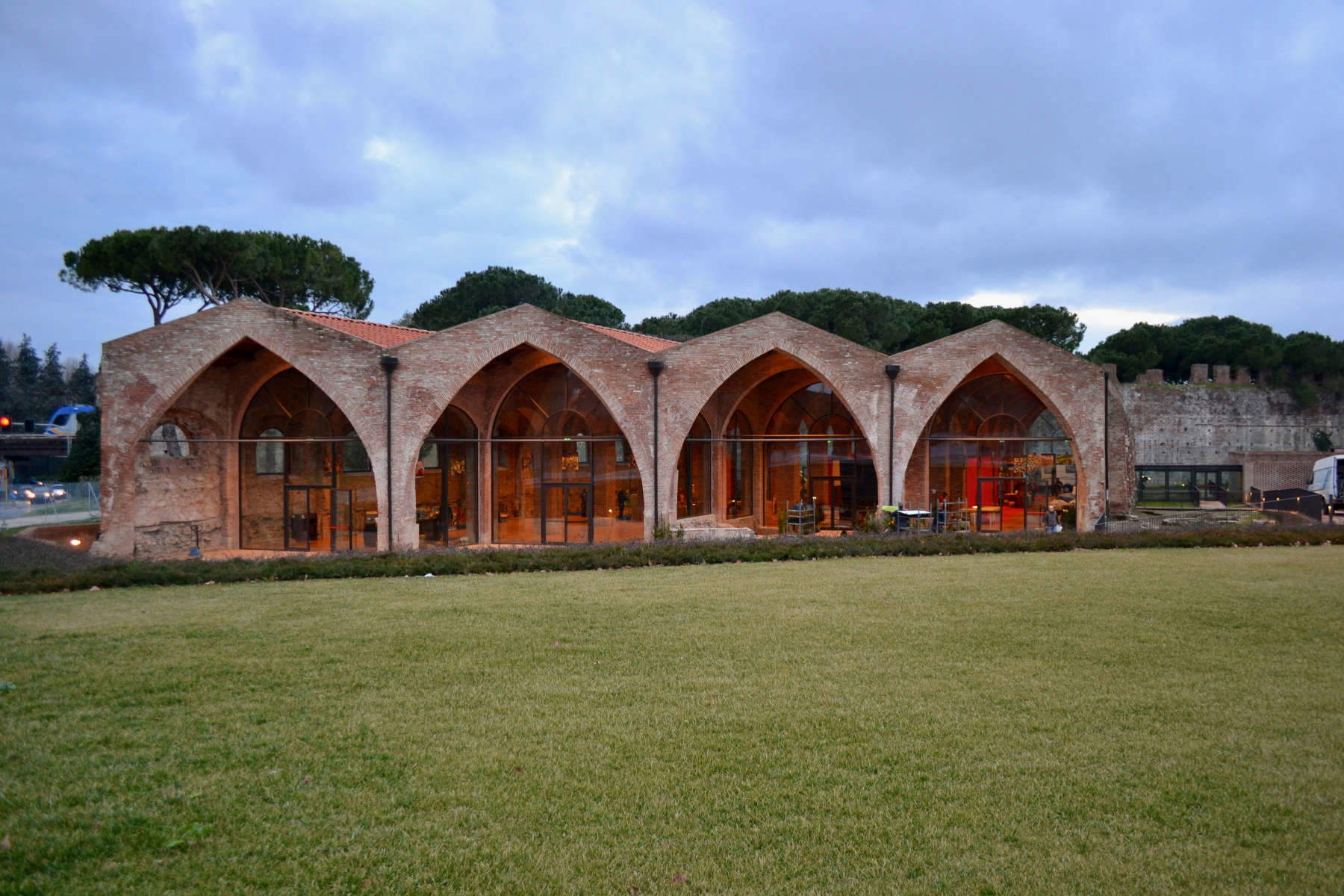

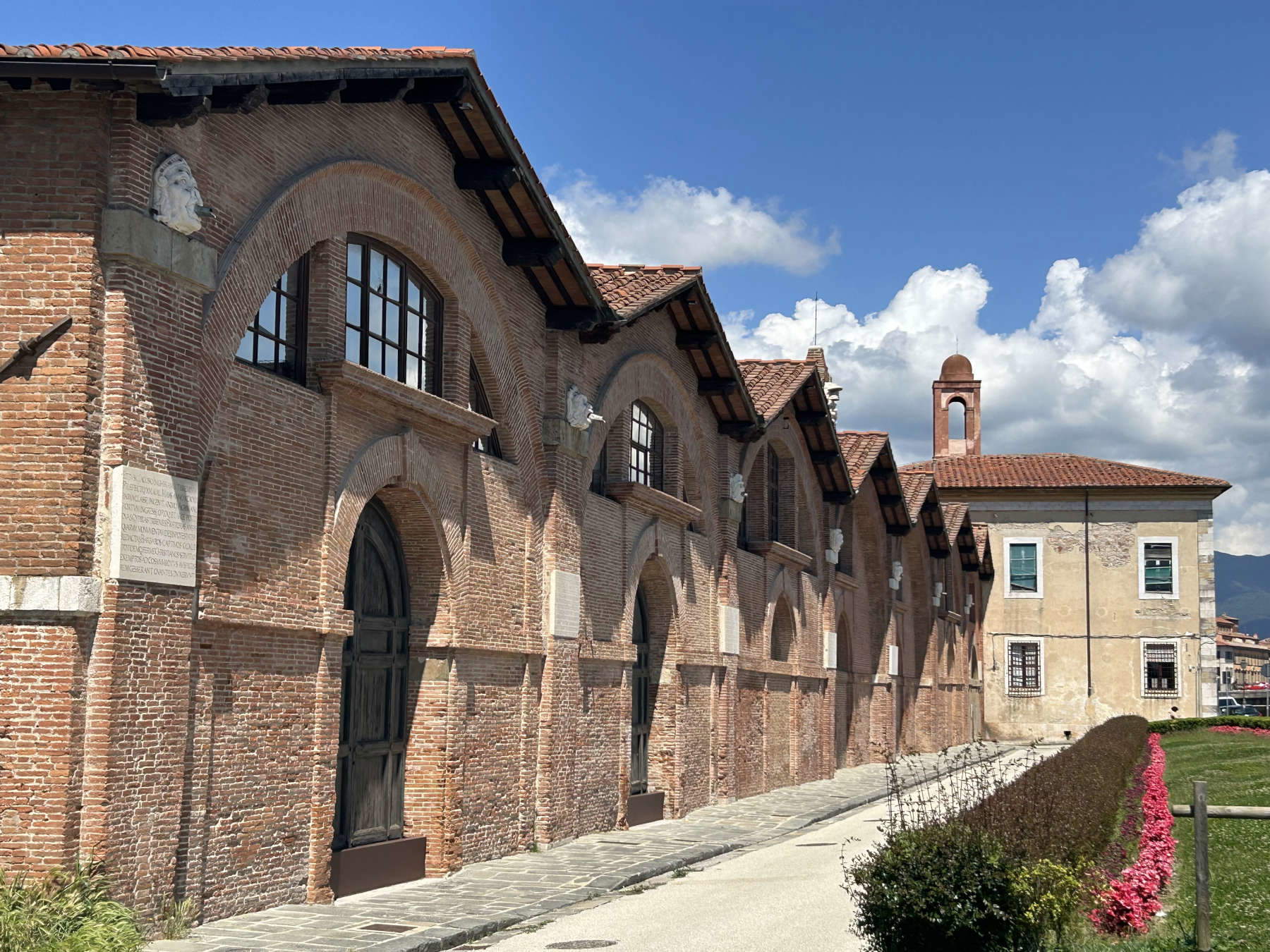

The collapse was rather sudden so that in 1300 Pisa was forced to cede Corsica and later lost Sardinia as well. The final demise came when the territory that fell into the hands of the Visconti in 1405 was sold to Florence, which managed to take possession only the following year because of the fierce resistance of the Pisans. Nevertheless, the new rulers, especially in a first season, did not want to deprive themselves of the possibility of securing an outlet to the sea and of initiating their own maritime policy, so they continued to maintain a squadron of galleys built in the Pisan arsenals, although the Florentines’ attitude toward the port of call remained rather contradictory and unfriendly.
In fact, they had no small part to blame in the decline of the Pisan arsenal, as they destroyed several structures, transforming part of the shipbuilding area into an area dedicated to becoming a garrison to control the victorious troops over the conquered city, and known as the “Cittadella.” This period also witnessed a depletion of skilled labor leaving the homeland so as not to live under Florentine rule. Moreover, in 1421 Florence secured the purchase of Livorno, then little more than a small port, but which would later attract increasing attention from first the Florentine Republic then the Signoria, diverting resources from the city of Pisa.
Throughout the era of the Pisan Republic, ships were built in the dockyards near the Benedictine monastery of San Vito. The dock was named Tersana, derived from the Arabic diction dar as-sana’a, a place where galleys were sheltered. With the purpose of administering the management of the facility, theOpera della Tersana was created. The maintenance of Pisan timbers was provided in these spaces, while military vessels were often built along the sides of the Arno.
The arsenals were developed around an artificial basin and consisted of structures formed by about sixty porticoes. The whole area was then fortified from 1261, and in 1290 the Ghibelline Tower was built. Although downsized with the beginning of Florentine rule, the area retained its function, and with the accession to the Grand Ducal throne of Cosimo I de Medici for Pisa was carved out a new role. The Grand Duke, in fact, had decided to crown his expansionist aims on the Mediterranean by establishing in 1562 the military chivalric Order of Saint Stephen “in defense of the faith and to guard the Mediterranean,” which later found its headquarters in Pisa. This was a military body deputed to combat, but also an effective instrument of control over the Tuscan aristocratic class and training for the ruling class.
It was therefore decided to install the arsenal of the new Tuscan fleet in the city of Pisa, at the same time those in Portoferraio and Livorno were also being developed. New facilities were therefore implemented, building new warehouses in the area between the republican arsenal and the monastery of San Vito. This choice was dictated by the need to launch larger ships. The early Medici arsenal, in which Grand Ducal architect Bernardo Buontalenti also participated by providing the design, was divided into eight naves sixty meters long and eight meters high, thus constituting a large loggia formed by brick arches resting on pillars and surmounted by a gabled roof. The structure was later flanked by foundations for canvases, and by 1563 it was further expanded.
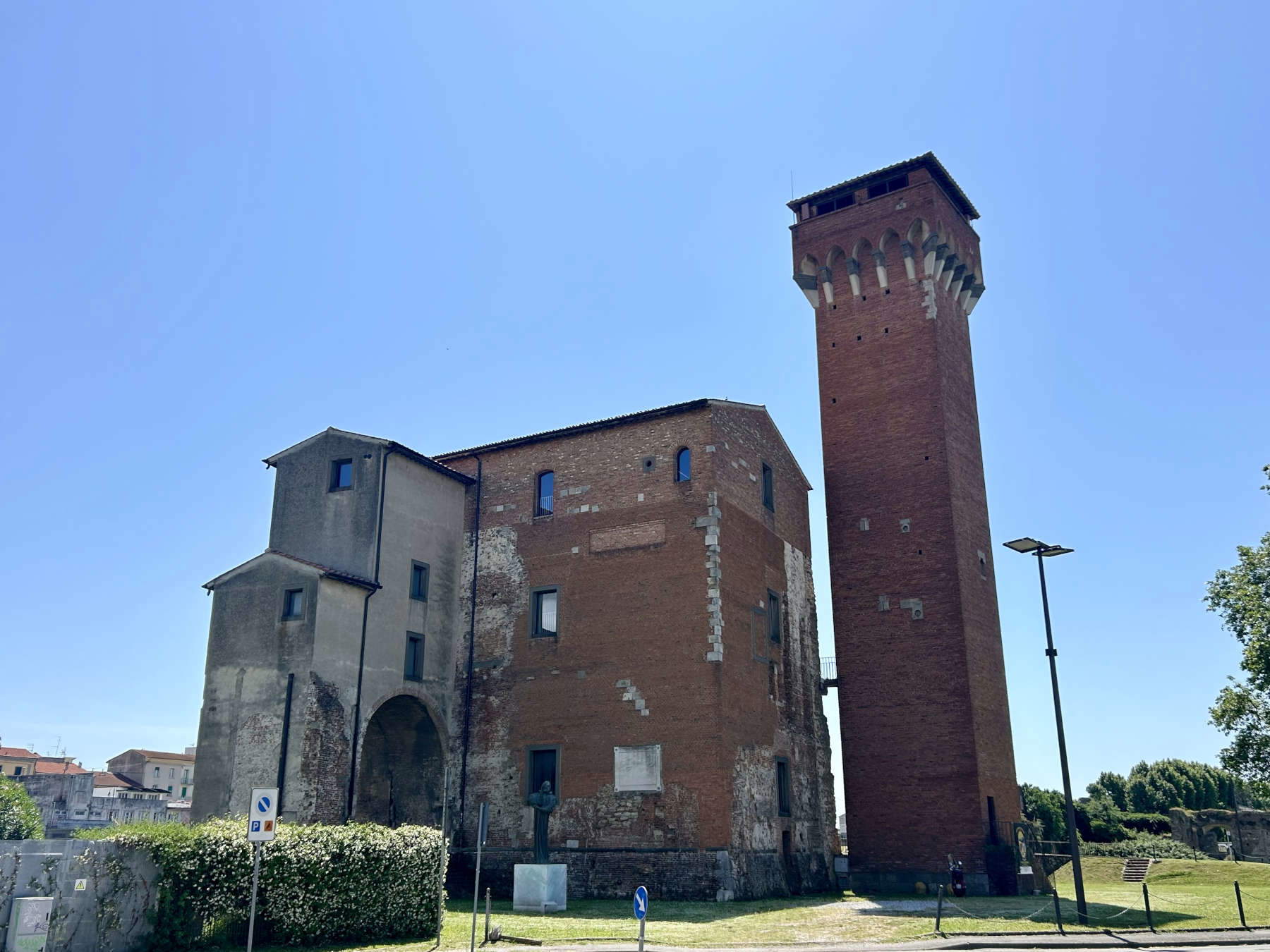
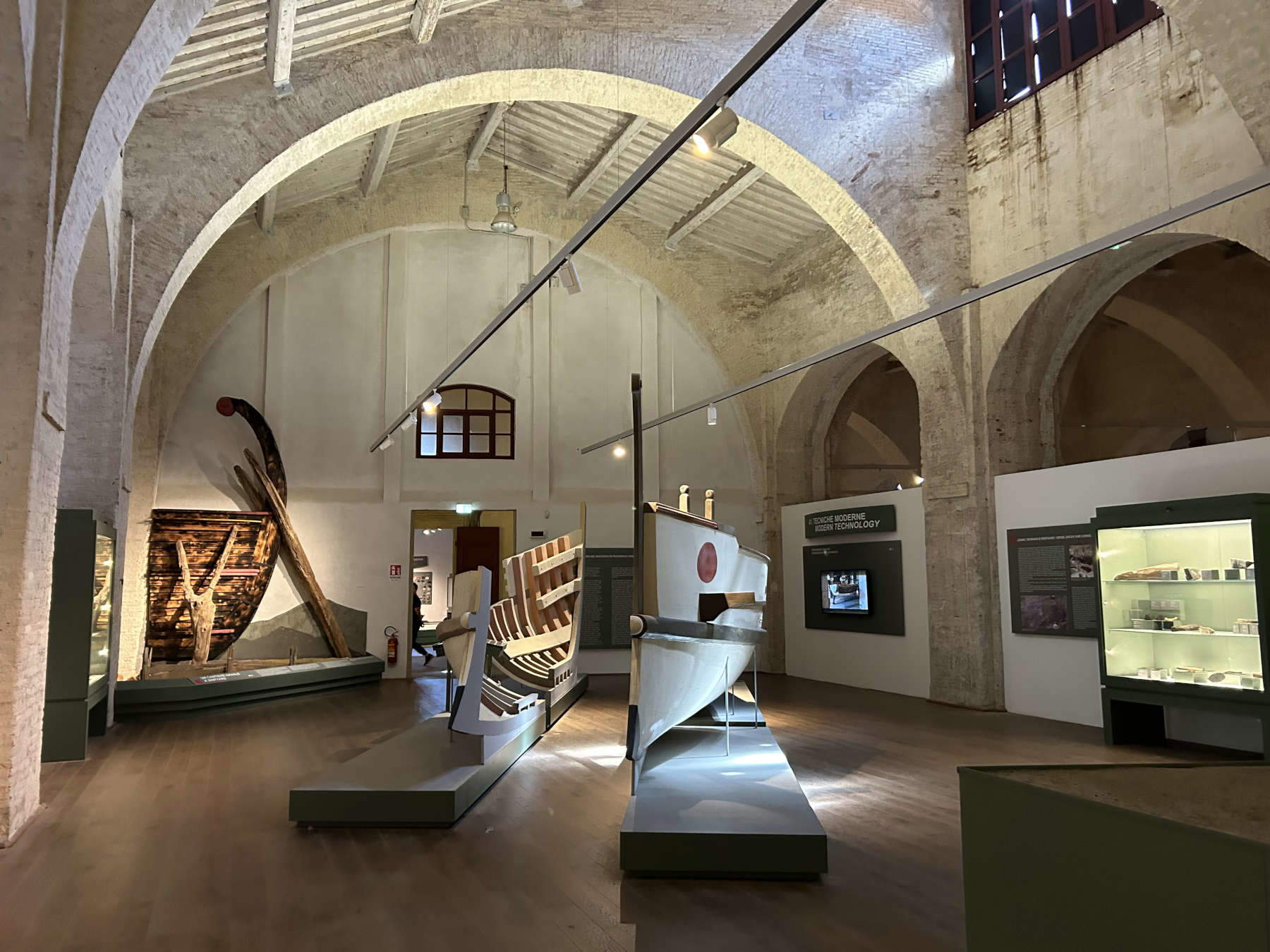
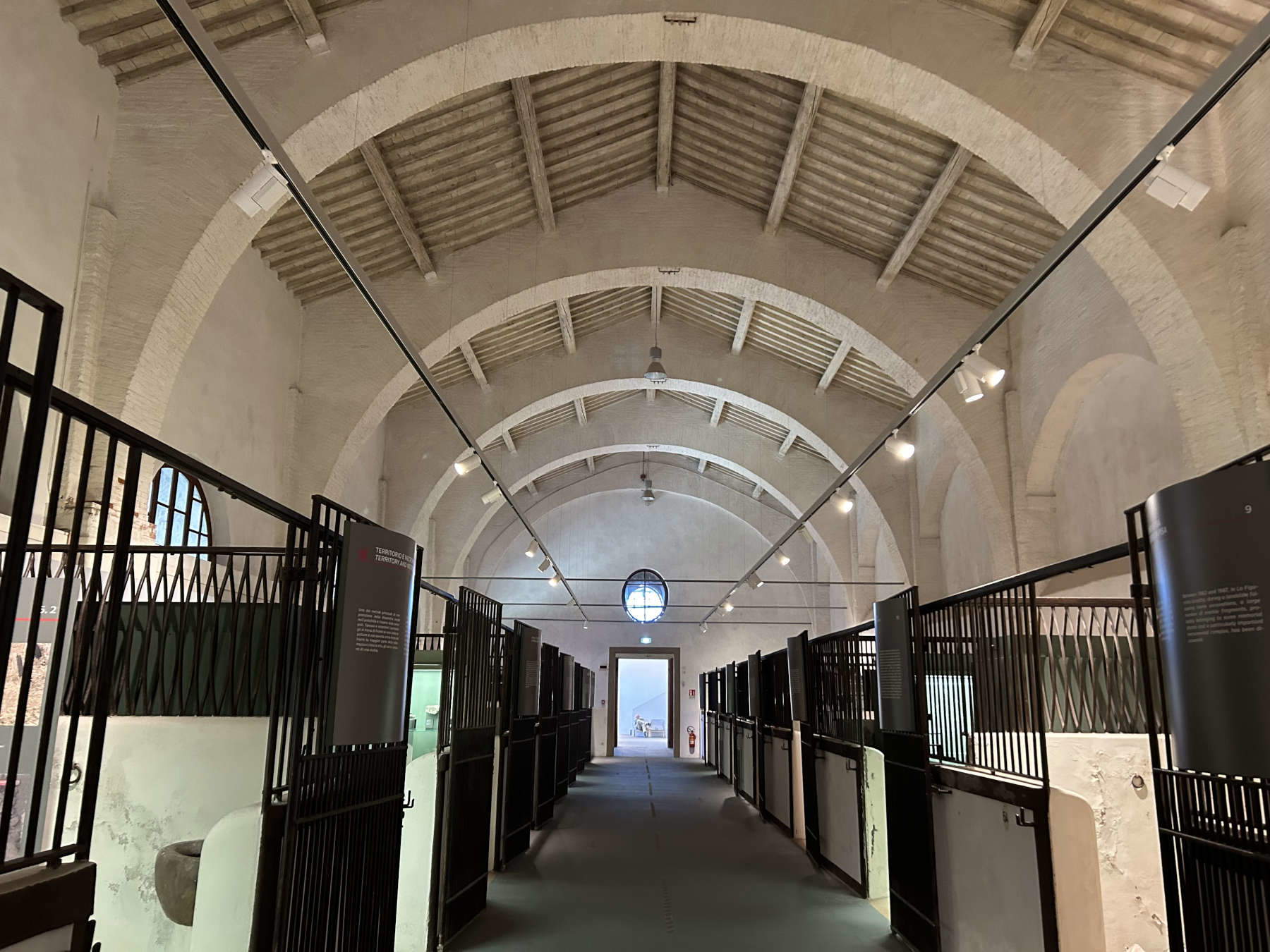
Even before launching ships on behalf of the Order of Santo Stefano, the arsenal had already distinguished itself by building several galleys, including La Pisana, the San Giovanni, the Toscana and the Padrona. All the ships sported Medici insignia and were equipped with a decorative apparatus of considerable scenic appeal. For the Order of Santo Stefano, the art of shipbuilding developed to great heights, and under Ferdinand I one galley a year is said to have been built for the duration of his grand duchy. To this period also dates the Capitana, which became famous for being the ship with which Princess Maria dei Medici sailed from Livorno to Marseilles, where she was to join her husband Henry IV of France. In time, however, the Pisan dockyard suffered competition from the Livorno dockyard, which had lower costs for putting ships to sea, and the Pisan center ended up in time becoming a mere warehouse and its workers were employed for other kinds of work, such as making furnishings for the Medici residences. By the mid-17th century, the importance of the arsenal had dimmed, and it continued its function mainly for private vessels.
In the first decades of the 18th century the sheds were used as a shelter for the Spanish cavalry and later to house the cavalry regiment of Grand Ducal Dragoons. For this purpose the space was paved and the arches plugged, while in the 19th century some of the arches were demolished to make an inner courtyard. With the Unification of Italy, the arsenals became the horse breeding center of the Savoy state, which remained active under the Italian Army until 1965.
During the last World War numerous bombs fell on the district involving all structures related to Pisa’s naval past, and this led to a long period of decay. In recent years, however, a new cultural policy has recovered what survived of the Republican and Medici arsenal. In the former case, the structure has had its roof restored, provided with new lighting and cared for the surrounding public green space, becoming an exhibition space, where temporary virtual exhibitions have been held, as well as one dedicated to Steve McCurry’s photography. While the Medici arsenals were restored to house the Museum of Ancient Ships of Pisa, thus re-establishing the link with the sea and navigation, for which they saw their origin. The restoration work has retained part of the horse stalls, with troughs and gates, making it opt for a museum display organized in chapters, while along the space of the large bays are arranged the ancestral boats from the Roman period, which were found starting in 1998 near the San Rossore train station. These interventions had the merit of recovering two structures of great importance to Pisan history.
Warning: the translation into English of the original Italian article was created using automatic tools. We undertake to review all articles, but we do not guarantee the total absence of inaccuracies in the translation due to the program. You can find the original by clicking on the ITA button. If you find any mistake,please contact us.





























